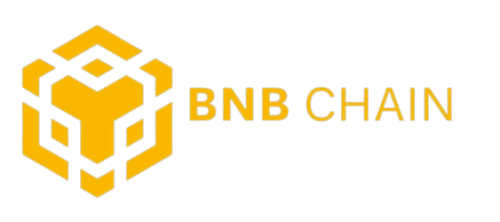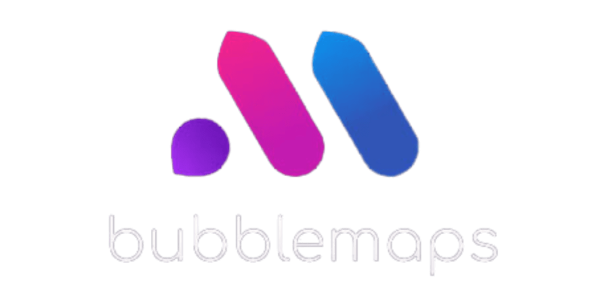There has never been a better time to be a developer and entrepreneur in the DeFi sector. With hundreds of billions of dollars in TVL, forkable open source code, and ever-increasing prices, you may be thinking to yourself, how can I get a piece of the action?
Dozens and sometimes hundreds of new projects are deployed each week by experienced and beginner developers. Just like there are more than one way to skin a cat, there’s a variety of options to build your project. While there is no right answer to building a project, successful project share common attributes. There are three major factors to consider when launching your defi project.
- Tokenomics
- Hype Cycles & Community Building
- Security
Let’s explore each of these categories.
Tokenomics
Tokenomics is a word commonly used in the crypto space when talking about the economics of a token project. It essentially means how the project is structured to deliver tokens to the project’s participants, Development Team, Advisors, Marketing funds, and other uses as determined by the roadmap and documentation.
Investors will ask repeatedly for a description of your tokenomics, so it’s best to keep it short, simple, and EASY TO UNDERSTAND.
DeFi is an international industry where you could be holding a conversation with a group from the US, Argentina, and Malaysia at the same time. If the investors’ grasp on the main language for the project isn’t at a high level, you’re likely to lose that investor since they won’t understand how the project works.
How to set up your project with killer tokenomics? There are a hundred ways to structure a project, but the best projects share these kinds of structures.
Team/Developer Allocation
Some projects tout themselves as giving 0 allocation to their developer team. The ONLY time this is ever a feasible option is when there is a massive benefactor supporting the project. A prime example of this is Venus Protocol which was previously managed by Swipe who is owned by Binance.
Running a project can be prohibitively expensive and developers will need funds in order to sustain the project. Developers should aim to allocate 14-40% of the tokens for Treasury, Team, and Marketing expenses. Allocating less than 10% of tokens for the Team/Expenses may have a detrimental impact on the longevity of the project UNLESS the team has a solid plan to generate revenue to sustain the project.
The first project we launched was Jetfuel.Finance with our token $FUEL & $JETS. We had allocated only 2.5% of the total tokens for the team, minted over the course of 6 months. The low levels of tokens given to the team made it difficult to plan and fund operations since the treasury was so low. Looking back, we should have allocated 15%+ to the Dev team.
Luckily, we had solid revenue generating products developed. We established a strong staking program with the $JETS token and implemented a 2.5% withdraw fee that went directly to the dev wallet. We also built a very strong yield optimization program with auto compounding vaults. The withdraw fees & performance fees from the vaults allowed the Jetfuel Treasury to grow rapidly and fund the growth of the project.
Yield Farming
Yield Farming has become the de facto distribution method for projects to distribute their tokens to investors. The best performing tokens need to start with 70%+ of the emissions going to the native tokens liquidity and staking.
The other 30% (or less) can be distributed to non-native token pairs and staking. Keep in mind, by distributing tokens to non-native pools, those pools are earning the token “for free”, meaning they don’t need to have any exposure to the native token to earn it. This may cause investors to dump the token faster.
Jetfuel started with 65% of FUEL emissions going to the FUEL-BNB pair. After we changed it to 85% of FUEL emissions to FUEL-BNB and the JETS token (staked FUEL token), the price began to rise again rapidly.
Native Incentive
Investors need a reason to hold the native token. Popular methods of providing value to native token investors is to provide governance rights to the token, profit/revenue share, exclusive earning potential with other token pools, memberships to features, exclusive payment methods, and more.
Strong developers will always look at their token and ask them elves “Would I buy/hold this?”, if the answer is no, they get back to the drawing board and revamp the tokenomics to ensure value is delivered to their token holders.
Hype Cycles & Community Development
Crypto currencies live and die by hype cycles. A hype cycle is the typical explosion of activity at the project’s launch with a dizzying surge of volume, pushing the token to incredible heights due to FOMO and low liquidity. Here the telegram group and Twitter are generally all Moon Memes and the poocoin page is DDOSing due to the number of refreshes price checking.
After the early investors have made a multiple on their original investment, they begin to dump and the price comes crashing down. As the price crashes, investors quickly pull liquidity and sell, exasperating the downfall due to lower levels of liquidity. Prices in the beginning of a project will drop faster than you would ever believe, sometimes a 90% drawdown in a few hours can happen. It’s to be expected so plan accordingly.
Here is where the strong survive to build and the weak delete their Telegram Accounts and shut down their website.
If you can survive the dip and mitigate and control the damage/fud/”why is the price dumping” questions, your investors will start to buy back in, leveling out the prices and bringing confidence back to the project. A price discussion channel is critical at this point so the main telegram isn’t flooded with negative price talk.
At this point is where your marketing budget needs to go into full effect. Once you lose the initial hype of the launch, many investors will seek to move on to the next hot token where they can ride the wave up in the hopes of cashing out easy profits.
You’ll need to hold the attention of these investors to ensure your project has the investor base to increase prices and liquidity.
Hitting Twitter, Reddit, Discord, Medium, with massive amounts of quality content, funny memes, and insightful commentary while engaging the community will become a full time job. Project Developers will need to work their ass off to form partnerships with large and smaller projects and work to expand their holder count.
Community
The tokens community is one of the strongest intangible assets a developer can build. Treating the community well, listening to their feedback, and acting on their feedback goes a long way in the eyes of the community.
Unhappy community members will dump the token and leave for other projects.
Some developers are quick to ban community members who are “fudding”. Generally, the “fudder” has a good reason to be upset and their comment should be analyzed to see what could have been done differently and act accordingly. A happy and interactive community will grow the project to massive levels while an unhappy and mismanaged community will destroy a project.
Security
Security is the most important aspect of the project. Poorly designed code will result in a poor user experience, or worse, exploits. An exploit can drain the contracts of the users’ funds to a hacker or leave the users funds locked and inaccessible. Defi is built on smart contracts. Smart contracts are immutable once deployed, meaning they can not be changed. So, a developer must take extreme care when pushing their smart contracts to the public.
The best projects will have their code audited and tested before it enters production. Deploying the project, then getting an audit serves no purpose except as a marketing gimmick. What happens if the deployed code has a vulnerability? The developer must pray the contract is not exploited, and if it’s not exploited, then force their community to withdraw and redeposit to a new contract. This results in a poor user experience and a lack of proper planning.
At Jetfuel, we take a security first approach to our development. All our code is audited prior to deployment and any pending issues are fixed before our community touches the smart contracts. We’re proud of the “Low Risk” rating bestowed from Rug Doc.
Summary
In Summary, there are many ways to build a successful Defi project. Top Tier developers will set up proper tokenomics, care about their community, establish strong marketing, and will ensure their smart contracts are production ready.
-Miro







